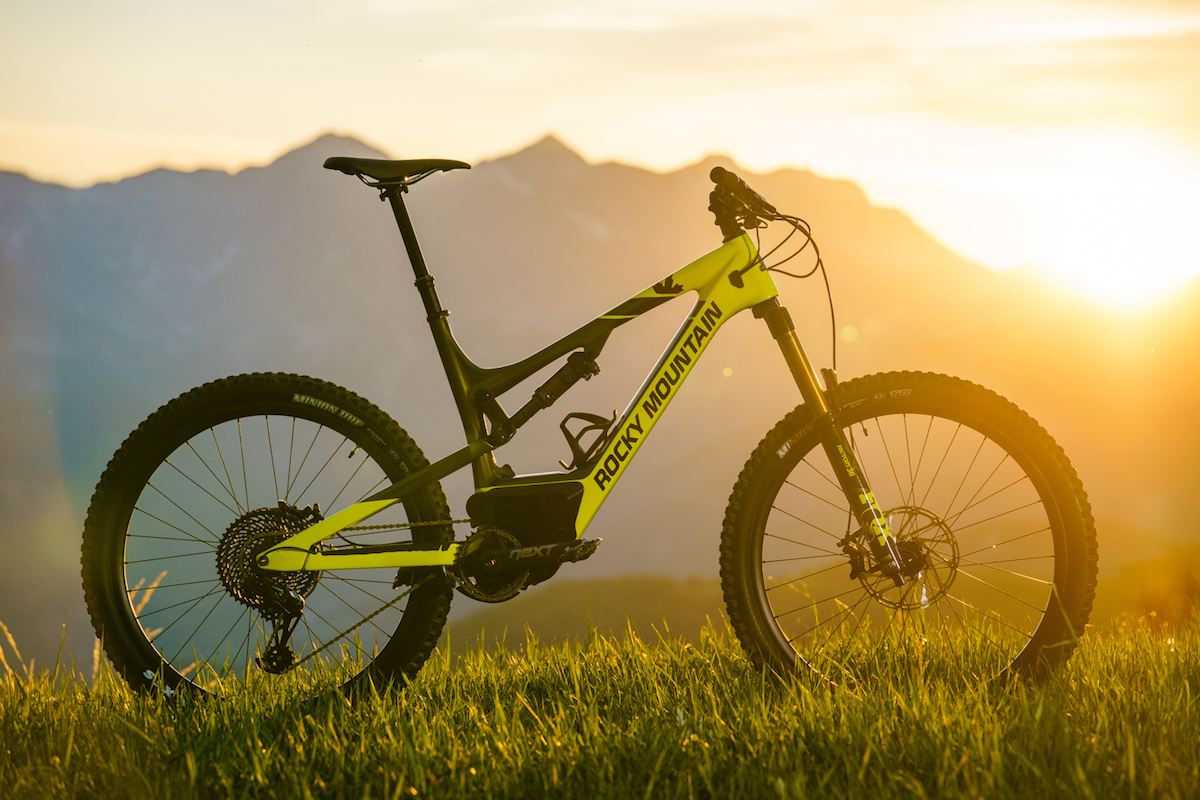
Wil travelled to Valberg to ride the 150mm travel Rocky Mountain Altitude Powerplay. Is this the best e-MTB on the market? Find out here
Wil sauntered over to Valberg in the South of France last week, where we had the chance to test ride the new Rocky Mountain Altitude Powerplay.
Contents
Airports & Alarm Clocks
It’s just starting to become light outside, and I’m listening to the songs of birds that I don’t usually get the chance to hear. By some kind of miracle (the miracle being several alarm clocks set in series on my phone) I’ve somehow managed to emerge from slumber a good few hours before the time my internal body clock is naturally wound for. With heavy eyelids and a fuzzy head, the reality of the marathon day ahead of me sets in, and then my eyelid feel heavier, and my head feels fuzzier. It most certainly doesn’t help things given that I know the snoring wife laid next to me is going to be smashing pancakes with bacon and maple syrup a couple of hours after I’m gone. Curses.
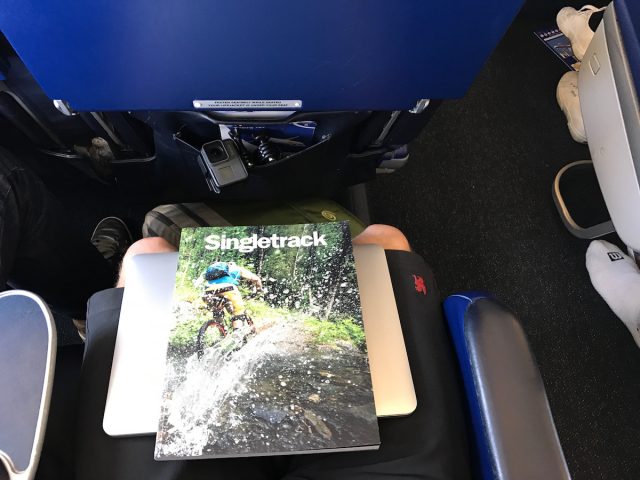
But not too many curses, because I’m about to embark on a journey to Valberg in France. Exciting! I’ve never been to Valberg before – awesome! Yes, I’m pumped (I continuously tell myself), but there’s still a solid eight hours of taxis, planes, airports, customs, more planes, customs, and then an airport shuttle between me and my end destination. Plenty of time to bust the laptop open and finish those several articles I need to submit for deadline this week. And to finish editing that video. And to go through all those photos that need sorting. And to manage and respond to those 57 emails that have come in overnight.
But those can wait.
I jump into the cab to hitch a ride to Manchester airport, where my friendly taxi driver takes a fascination in both my job and my impending two day work assignment. I’m a little too sleepy for conversation, but it’s not long before his enthusiasm rubs off, and I’m recounting stories about some the bikes I’ve been testing and the incredible places I’ve ridden them in. Yes it’s an early start to a long day, and yes my wife is going to be eating pancakes with bacon and maple syrup without me, but I’m going to be riding mega trails in a new place and on a brand new bike. And that does not suck.
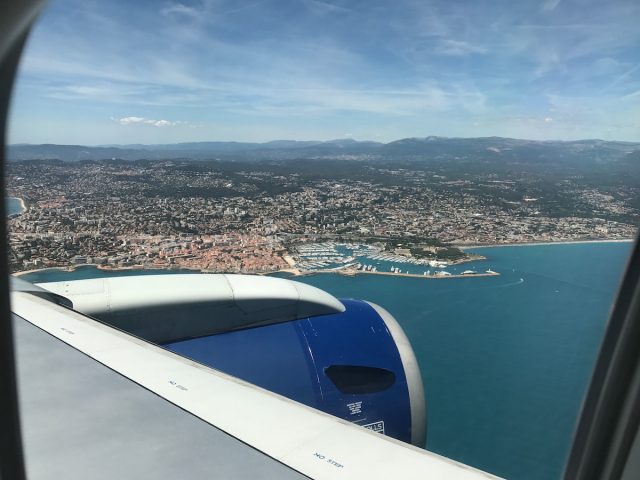
I eventually arrive at Nice airport several hours later. With gear bag in tow, I shuffle through the airport departure doors, where I and the rest of the planeload are greeted by numerous paparazzi snapping photos, and chauffeurs holding up iPads with exotic-sounding names on them. Wow – I didn’t realise Singletrack Magazine was this big in France! Then I realise the glamorous welcoming isn’t for me. Nope, it turns out the paparazzi aren’t so interested in a UK mountain bike journalist, but rather the dozen or so supermodels who shared the same flight from London with me. I look around and realise that there are beautiful people everywhere. And the fragrance worn by beautiful people is everywhere too. Photos are being snapped, smartphones are recording video, autographs are being signed, and sunlight bounces off the reflection of luxury sunglasses and expensive jewellery. Ah yes. So all of this hoo-ha would likely be because of the Cannes Film Festival that’s on right now, and by the looks of some of the blokes strutting around too, probably the Monaco F1 Grand Prix that’s on next week. I begin to feel just a little less glamorous than I did before.
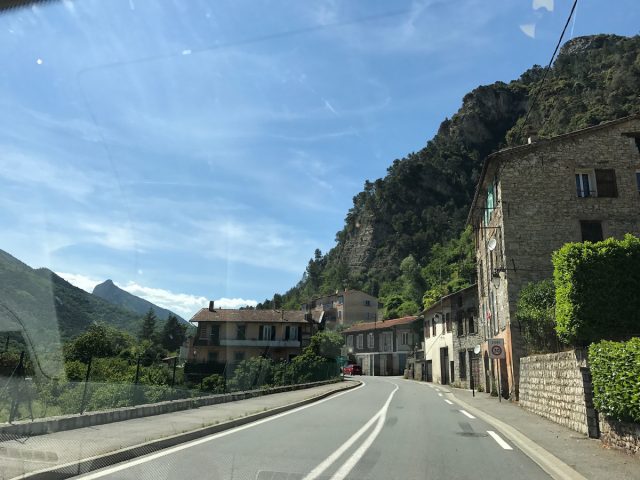
The Canadians Descend On Valberg
The reason I’m here in the first place? I’m soon to meet up with the crew from Canadian mountain bike brand, Rocky Mountain Bicycles, who have flown me and a bunch of other European cycling journalists over to come to Valberg to test ride a secret new bike. I haven’t ridden in Valberg before, but I understand the riding is steep, technical, and very, very rocky. Given it’s hosted numerous Downhill World Cup and Enduro World Series rounds before, I can believe the claims. And then I learn about some of the riders who have come from the area. You know, just the likes of Nico Voiullouz, Fabian Barel, Loic Bruni and Loris Vergier. Yikes…
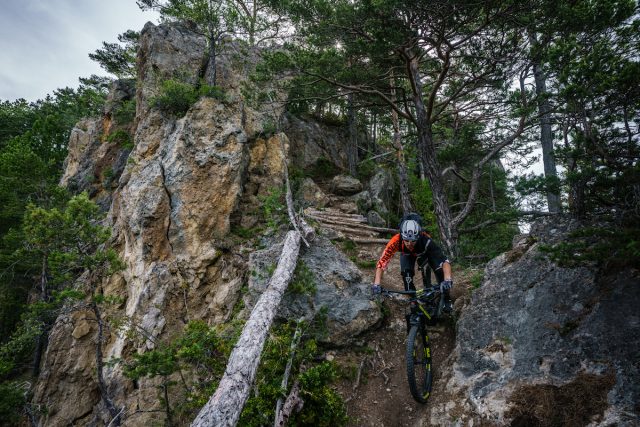
I’m picked up at the airport by Tom Ferenc, Rocky Mountain’s head of Research & Development. He’s never been to Valberg before either, but he’d arrived the day before and already had the chance to check out some of the trails we were to be riding on. His description of the riding mirrors what I’ve already heard.
We have a very windy 1.5 hour drive ahead of us, which is going to take us from the sun-baked ocean shores of Nice up into the alpine village of Valberg. Managing to stave off any car sickness from the steep, narrow and twisty alpine roads, we gain about 1600m of vertical elevation in the process.
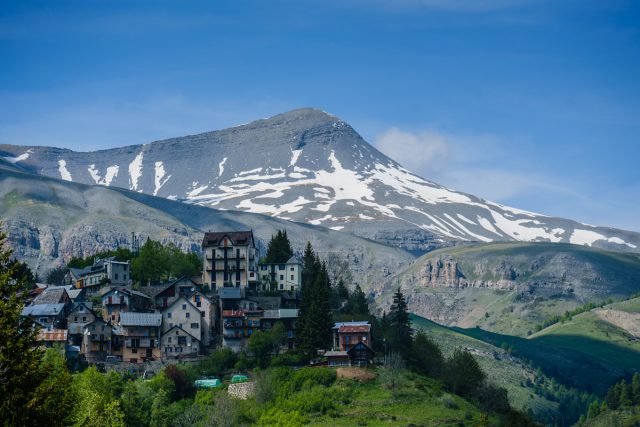
We arrive in Valberg, which resembles something of a ghost town. Our hotel is pretty much empty aside from Rocky Mountain staff and bike journos, and it seems that most of the cafes and restaurants are closed for the shoulder season. I’m told that the summer riding season in Valberg kicks off in mid-June and runs through to mid-September, so we’re a little bit early, but then I’m also informed that the so-called ‘riding season’ is a touch optimistic, and things are still pretty quiet even then. It might have something to do with the level of difficulty of the region’s raw and rugged singletrack, which is distinctly lacking in the new-school bikepark style flow trails that would normally attract the hoards of tourists and families. But if you want to have a riding holiday away from the crowds where you can ride highly technical 600 year old alpine singletrack, I could definitely recommend sleepy Valberg.
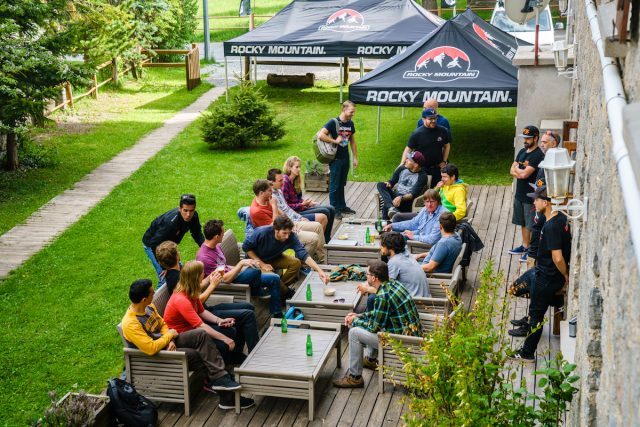
After settling in to the chalet, our group congregates in a presentation room over some beers and snacks. There are Germans, Italians, French, Czechs, Belgians, Dutch, Americans, Canadians, French-Canadians, and me – one of the few (most likely only) mono-lingual people in the room. At the front of the room is a wooden stand dressed with a white bed sheet, with a suspiciously bike-shaped object underneath. On the poster behind it, a graphic reads; Rocky Mountain Altitude Powerplay.
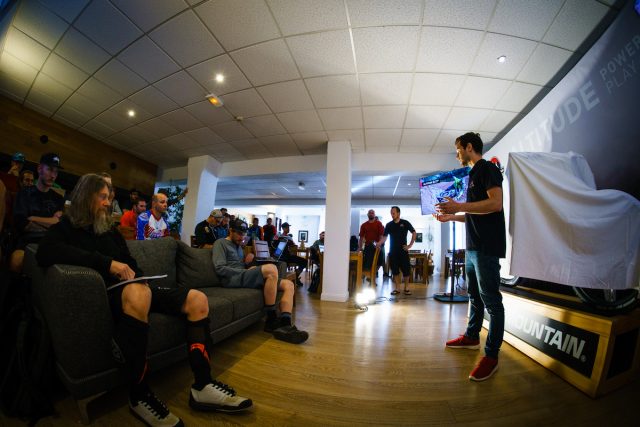
Rocky’s Powerplay Move
Now I’ve gotta admit, I knew I was coming to Valberg to ride a Rocky Mountain e-MTB. I’d heard whisperings prior, and I was also privy to some other knowledge about what sort of platform the bike was based on, and the fact that it would feature a very unique drive system unlike anything else on the market.
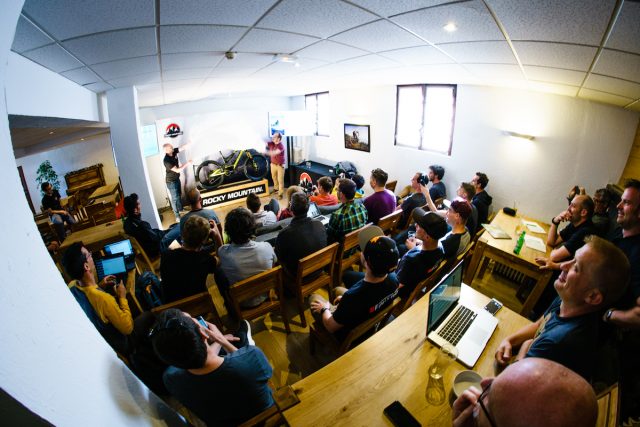
For a ‘core’ brand like Rocky Mountain, going down the e-MTB route is a very big deal. And as it turns out, Rocky had very deliberately chose Valberg to launch the Altitude Powerplay rather than on home turf in British Columbia in Canada. As Rocky’s Head of Product, Alex Cogger put it, “this (Europe) is ground zero for e-bikes”. Indeed it would seem that Rocky’s presence in Germany and wider western Europe provided significant motivation for creating an e-MTB product for a willing market that’s hungry for electric-assist bicycles. How the bike will be received in North America – where e-MTBs are a much more controversial topic – will be understood in the coming months.
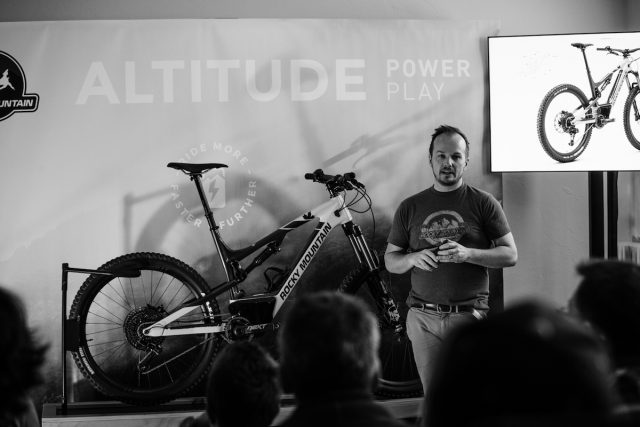
The Powerplay project first began about three years ago. “We bought A LOT of bikes”, explains Brian Park, Rocky Mountain’s head of content marketing, with a nervous laugh. After purchasing and testing numerous bikes and multiple motor systems, the Rocky engineers very quickly understood the design limitations of using the existing 3rd party motors on the market, such as those from Bosch, Shimano and Yamaha. In their eyes, the performance bar was pretty low for a proper off-road capable e-MTB.
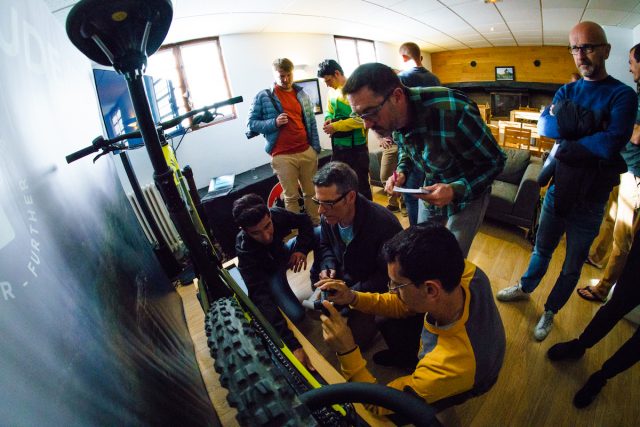
With that, they concluded they didn’t want to build a frame around someone else’s motor and battery system, so Rocky’s engineers decided they would build their own.
To do so would require an enormous amount of resources and technical knowledge, but Rocky had an ace up its sleeve.
To do so would require an enormous amount of resources and technical knowledge, but Rocky had an ace up its sleeve. Rocky Mountain is actually owned by the Quebec-based Procycle group. Procycle owns several cycling brands, including an e-bike specific brand called eVox, which builds urban style bikes with its own proprietary motor and battery system. With that foundation in place, Rocky was able to take that system and refine it into a 3rd generation package built specifically for mountain biking.
The result of those three years of development is the Altitude Powerplay; a full suspension All Mountain bike with 150mm of rear travel, 27.5in Wide Trail tyres, and a 250W motor tucked down low in front of the bottom bracket.
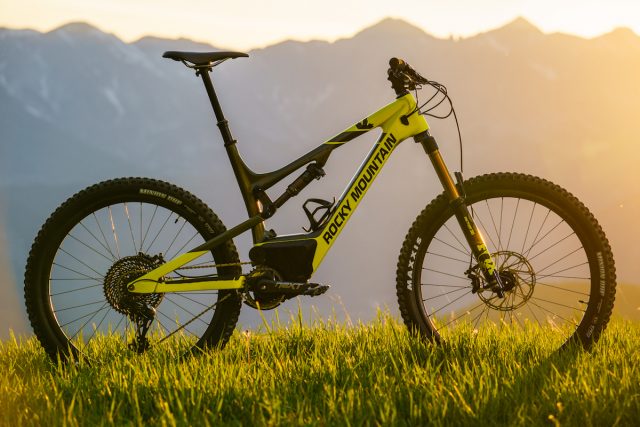
Rocky Mountain Altitude Powerplay Features
- Pedal-Assist Technical Trail Bike
- Same geometry as the regular Altitude
- Compatible with 27.5in and 26+ wheels
- 150mm Rear Travel
- Smoothlink Four-Bar Suspension Design
- Powerplay 250W Motor
- 500Wh or 632 Wh Battery
- Designed For 160mm Travel Fork
- 65.6- Head Angle
- 74.6 Seat Angle
- Ride9 Adjustable Geometry
- Boost 148x12mm Rear Dropouts
- 425mm chainstay length
- 1x Specific
- All sizes compatible with water bottle mount
- Claimed Weight: 21.6kg (Altitude Carbon 90), 22.3kg (Altitude Carbon 70 & 50)
- RRP: £5499 – £8499
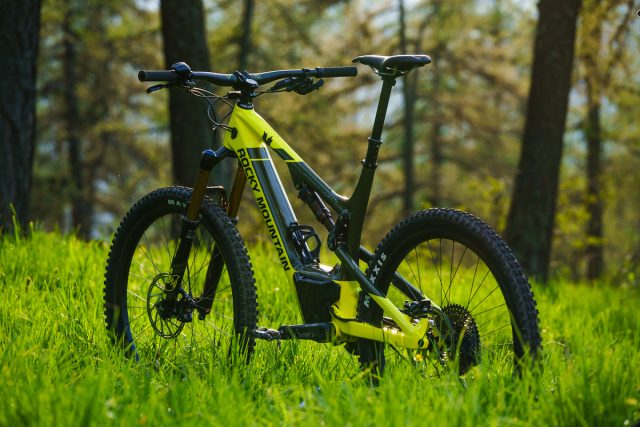
The Bike
Designing an e-bike or an e-MTB to look good must be one of the most unenviable tasks in the industry. With the given challenges at hand though, Rocky Mountain has done well with the Altitude Powerplay. It still looks like a pot-bellied mountain bike, but it is far less ‘gopping’ than most e-MTBs out there. And it is surprisingly clean for a bike with a 250W motor inside it. There’s a concealed battery within the downtube of the frame, and aside from a push-button remote on the handlebar, there’s no screen and fewer of the electrical wires usually present on most e-MTBs. A concealed sensor near the rear disc brake clocks a small rotor-mounted magnet.
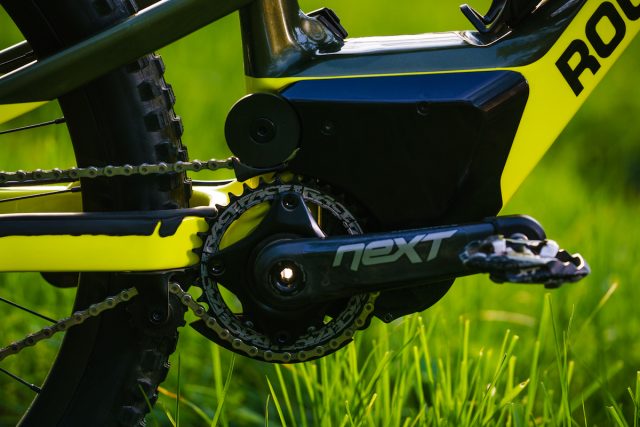
For the time being, the Altitude Powerplay frame is made only with a carbon fibre main frame, which is produced in Rocky’s Taiwanese facility alongside it’s other top-end carbon frames. However, the motor and drive system are made in Canada, and the whole bike – along with all the electrics – is assembled in Canada too.
The most compelling aspect of the Powerplay system is the fact that it doesn’t house the bottom bracket or crankset.
The most compelling aspect of the Powerplay system is the fact that it doesn’t house the bottom bracket or crankset. In fact, the Altitude Powerplay frame relies on a conventional PF92 bottom bracket shell and conventional DH-width cranks, while the motor sits just forward of the BB shell within a forged alloy housing that bolts to the frame. The reason Rocky Mountain has done this is to maintain the same 425mm chainstay length as the regular Altitude frame, while also reducing all of the load off the motor housing and mounting bolts. When you stand on the pedals, your weight drives through the frame’s bottom bracket shell – not the motor housing and mounting bolts. The idea being that over time, there’s less chance for movement and creaking to develop.
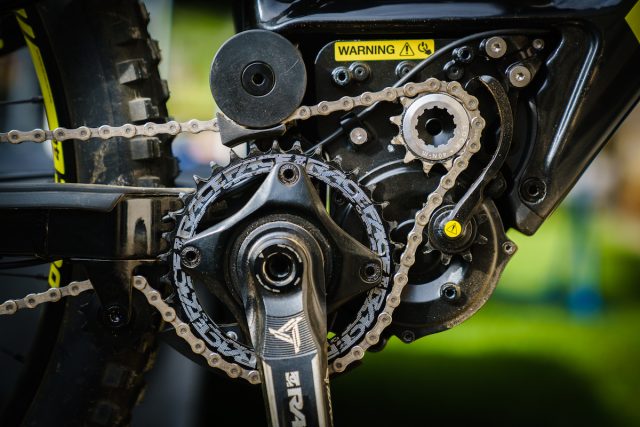
The motor is shielded by two plastic covers, which can be removed to access the driveline. As you’ll see in the photos, the chain comes in from the cassette, but before it contacts the chainring, it wraps over the motor’s drive sprocket, with a secondary idler wheel ensuring the chain runs into it at the correct angle. And it’s this drive sprocket that delivers the power into the drivetrain.
And here’s where it gets clever.
One of the areas that Rocky was keen to address with the Powerplay motor system was torque. Or to be specific, the delivery of torque. On the Powerplay system, just before the chain gets to the chainring, the chain runs past a lower jockey wheel that sits on a spring-loaded arm. As you pedal harder, the chain tightens against the jockey wheel, causing the spring to compress. Depending on how much the spring compresses, depends on how much power is delivered. So it’s rather simple – pedal harder, the chain tightens harder, and the motor gives you more assist. And so it’s this near-instantaneous modulation of the torque level – much like the dimmer switch on a lightbulb – that Rocky is most proud of on the Altitude Powerplay.
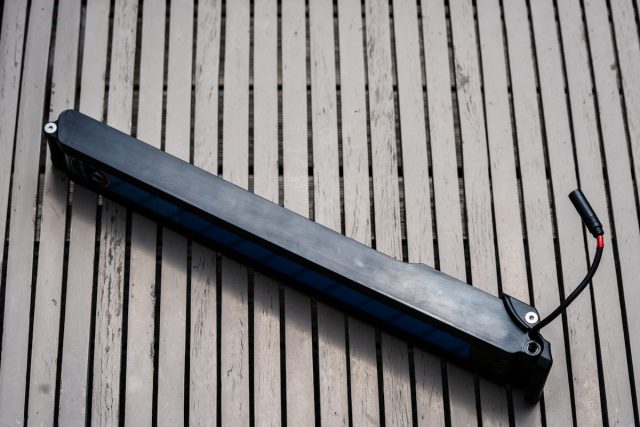
Fueling the motor is a lithium-ion battery held within the downtube. Using Samsung cells, the battery comes in a 500Wh size on the Altitude Powerplay 50 model, while the Altitude Powerplay 70 and 90 models use a larger 632Wh battery for more capacity. Each battery delivers 48V to the motor instead of the usual 36V. I don’t know what that means, but I’m informed that the battery charges 30% quicker compared to other e-bike batteries. So that’s cool.
All the driveline parts are easily accessible and replaceable with common tools
One of the other aspects of the Altitude Powerplay that Rocky was eager to address was ease of service. All the driveline parts are easily accessible and replaceable with common tools. And thanks to the modular design of the motor, should you have an issue with that, a replacement can be sent out, just as you would if you had a faulty rear shock.
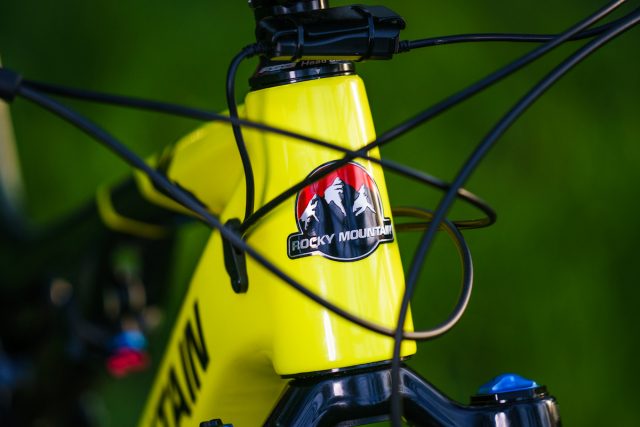
The Build
Otherwise the feature list on the Altitude Powerplay frame is very similar to the regular Altitude we recently tested. There’s tidy internal cable routing, a Boost 148x12mm tooled thru-axle, and post mount 180mm brake tabs. And while it should be pretty obvious, the frame is 1x only too.
The four-bar Smoothlink suspension design uses exactly the same design as the regular Altitude, with Enduro MAX cartridge bearings used throughout, including for the lower shock eyelet. The frame is built around Minion DHF 2.5in Wide Trail tyres from Maxxis, as Rocky wanted to build a proper aggressive trail bike.
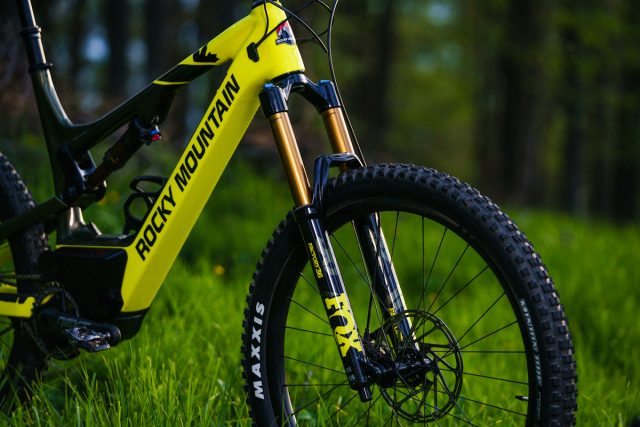
There will be three different options in the Altitude Powerplay series: the 90 (£8499), the 70 (£6499) and the entry-level 50 (£5499). The model we rode during the launch in Valberg was the mid-level Altitude Powerplay 70.
While all of the bikes feature a carbon fibre mainframe, only the top-level 90 model gets a carbon fibre rear, while the 70 and 50 feature alloy chainstays and seatstays. Also shared throughout each model is the use of SRAM’s powerful Guide RE disc brakes, complete with 200mm rotors front and rear. Each bike also features the same SRAM EX1 1×8 drivetrain, including the EX1 trigger shifter, rear mech and 11-48t cassette. However, the 90 does get upgraded to lovely Race Face Next SL carbon cranks, while the 70 and 50 get alloy Turbine cranks.
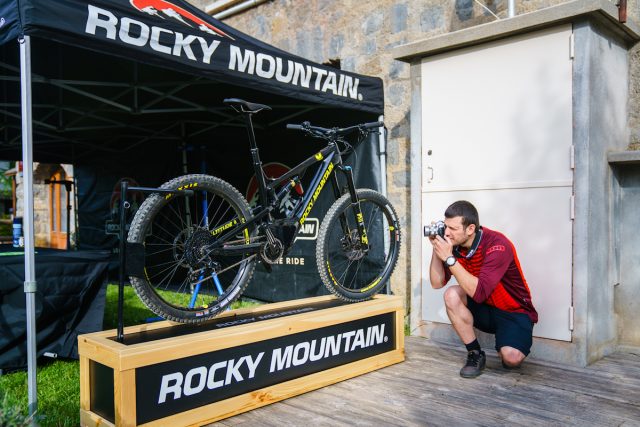
Wheels are custom-built numbers using a Rocky Mountain branded front hub and a DT Swiss 350 rear hub laced to Sun Ringle Duroc 40 rims. Cockpit items come from the Race Face stable, and annoyingly with the 35mm handlebar diameter that meant I couldn’t mount my 31.8mm camera bracket to the bars. Saddle dropping and suspension duties are handled by Fox, with the excellent Transfer dropper post, Float DPS EVOL rear shock and Float 36 fork.
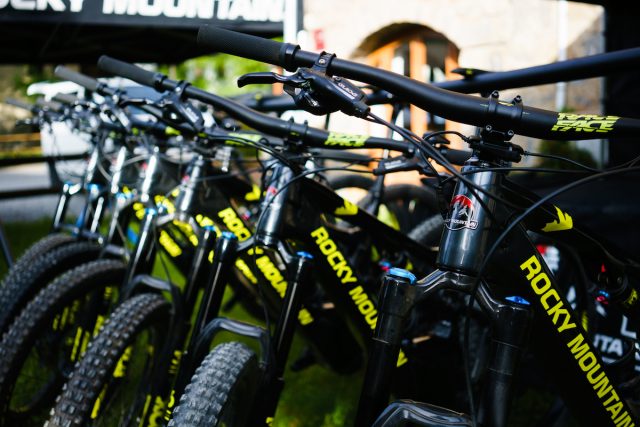
Following our learnings of the new Altitude Powerplay, it was time to put turn the theoretical exam into a practical test. After a typical French breakfast of croissants, cheese, meats, and terrible coffee, our large group of journalists began the process of picking a test bike and getting setup. As you can imagine, this turned into the longest game of faffery that you could ever imagine. Tyre pressures were dialed in, saddle heights were measured, brake levers were being flipped, suspension pumps were whipped out to adjust fork and shock sag, and pedals of choice were threaded into crank arms. After about an hour of setting up bikes and POV cameras, our continental group of riders were ready to be herded like cats by our guides for the day, local Valbergians Keiran and Greg.
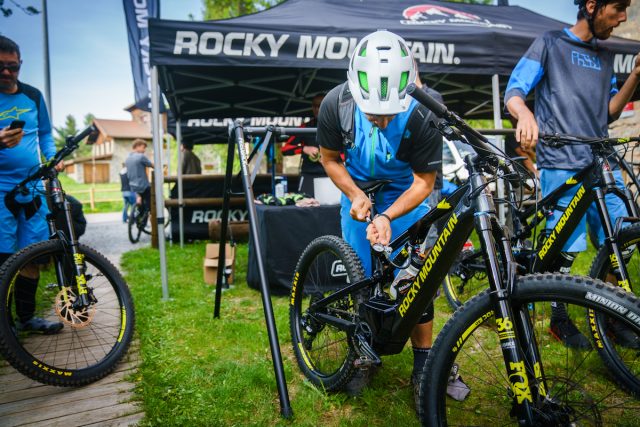
The Ride
With geometry that’s identical to the regular Altitude, getting setup on the Altitude Powerplay is a piece of piss. At 175cm tall, I elected for a medium frame size, which worked well given that the 150mm travel dropper post was already slammed down as far as it could go.
Reach is roomy without being radical. Small is 416mm, Medium is 435mm, Large is 458mm and X-Large is 484mm. Paired up to the 50mm stem and 780mm wide bars, the position for me felt really, really good out of the box. The only aspect of the Altitude Powerplay that felt a little different for me was the wide 183mm Q-factor, which is a result of the DH-width Turbine cranks. However, it’s the sort of thing you get used to reasonably quickly, and it’s by no means as wide as a Bosch-equipped e-MTB.
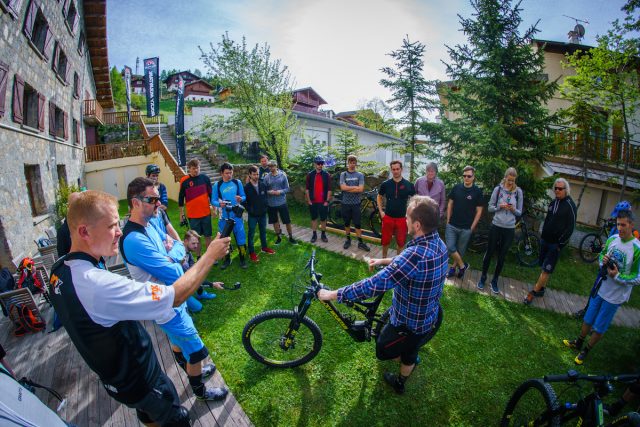
Setting up suspension was similarly easy, and I settled on 30% sag (190psi) in the rear shock and 25% sag (75psi) in the fork for my 70kg riding weight.
A small pod on the left-hand side of the bars gives you control of the Powerplay system. There’s an on/of button, a button to toggle up the power, and a button to toggle down. Like other e-MTBs, there are three settings, which Rocky calls ‘Eco’, ‘Trail’ and ‘Ludicrous’. There’s also a Walk mode that provides a light assist for helping you push the bike along uphill if you encounter anything that’s unrideable.
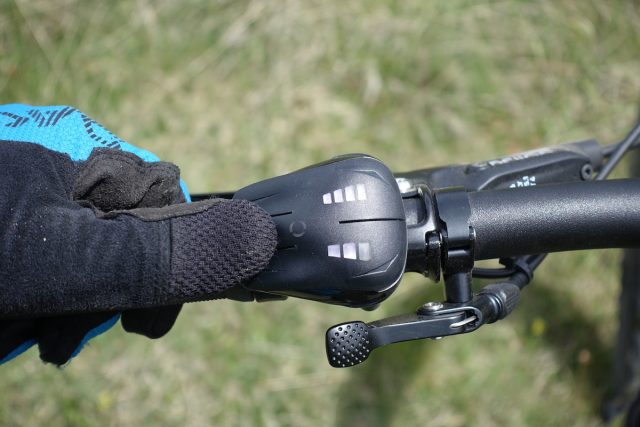
While we didn’t get into it during the launch, there is a downloadable ‘eBikeMotion’ app that allows you to interface with the Powerplay system so you can adjust settings, access battery range, and record GPS information all with your smartphone. You can even upload directly to Strava, and if you’re the sort of person that mounts your smartphone on your handlebar, you can even download GPX files to the app for turn-by-turn directions. A small port in the module underneath the stem means you can charge your phone off the bike’s battery. Needless to say, it’s a gear freak’s dream.
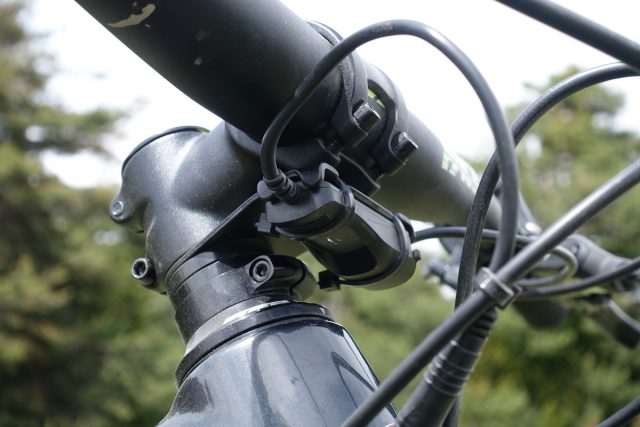
For me however, I quite liked that I could just turn the motor on, and ride. Illuminated LEDs indicate which power mode you’re in, and how many bars of battery life you have left. However, I’d prefer to see coloured LEDs used instead of the white LEDs that are difficult to read in broad daylight.
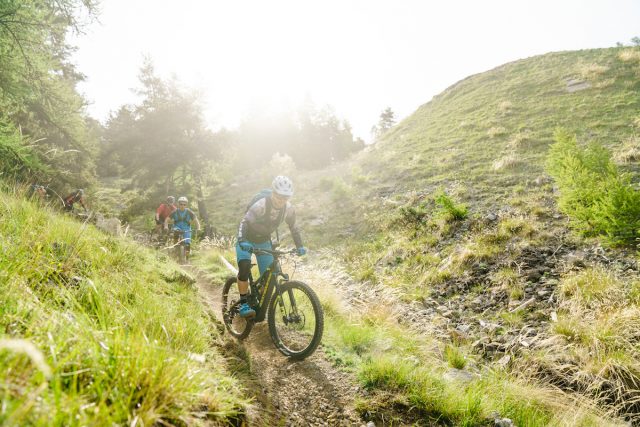
After flicking on the motor, it was time to pedal away from the chalet and begin our ride. A stretch of alpine road took us to the beginning of our first stretch of singletrack; an incredibly steep, rough and loose descent that dropped us straight into one of the trails used for last year’s EWS stages. Ideal for riding on a brand new bike first thing in the morning. Very quickly I realised the SRAM Guide RE brakes (which basically use 4-pot Code callipers) would be just as suited to slowing down a Range Rover Sport as they were on the Altitude Powerplay. With both tyres locking up at the mere whiff of braking on the loose and rubbly trail surface, I spent the first half an hour of riding largely fearing for my life. I also actually switched the motor off for this descent, as I wanted to reduce the chance of going any faster than I could possibly control.
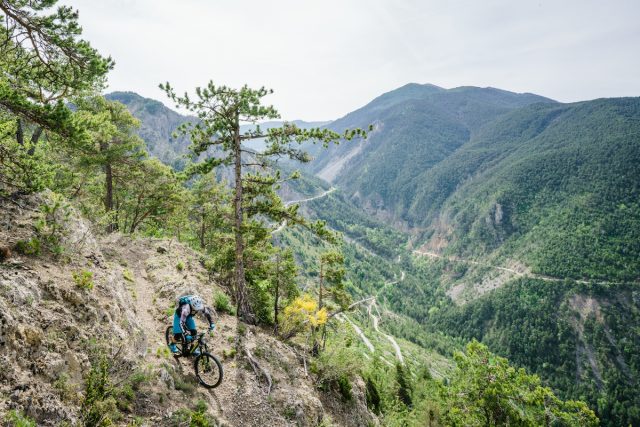
As the trail mellowed out a little and I was able to pedal, I flicked on the control unit. At this point I started to get a better feel for the smooth power band on the Powerplay system. The assistance comes on quickly and smoothly, with very little attention being drawn to the motor, and there is much less ‘lurching’ than I’ve experienced when riding a Bosch e-MTB. There is minimal lag to the Powerplay motor, and just as Rocky claimed, the harder you pedal, the more assistance you get.
Although you can use the remote like you would a front shifter to engage different modes, I found I left it in the Eco mode for most of the time, only clicking up to Trail for longer and steeper climbs. However, being on the lighter and fitter side, I’m ok with putting in more effort without having to draw on the motor so much. Heavier and less fit riders will likely spend more time in the Trail setting, which provides good cruising speed for undulating singletrack. And while the Ludicrous setting is hilariously fun for blasting up fireroad and bitumen climbs, it does require careful management on technical ups where the bike can quickly push away from you if you’re not weighting the front wheel sufficiently. Best to flick it into Trail or Eco for those techy climbs.
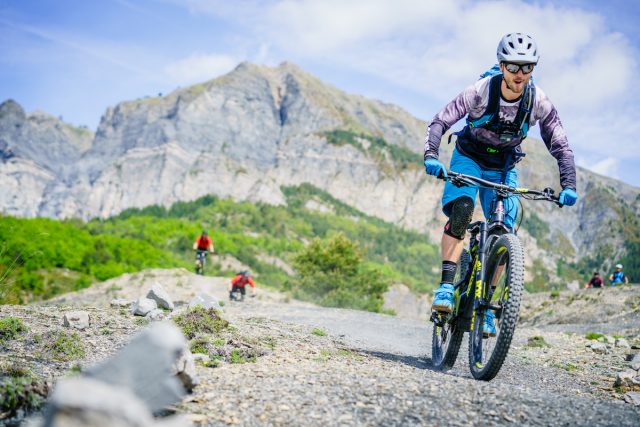
One thing to note is that the system is optimised for a cadence around 77rpm – pedal really slowly or really quickly, and you won’t get as much out of the motor. Once you get a feel for that, it really is an easy bike to jump on and just ride, with no real learning curve to speak of.
Speaking of the motor, it is very quiet. Early on its development, Rocky nicknamed the Altitude Powerplay project ‘Red October’ due to the motor’s near-silent operation, which doesn’t emit any of the same whine or whirring that you’ll get from other motor systems. However, there is quite a bit of mechanical chain noise from the idler pulley – about the same kind of noise you’d get from a full downhill-style chain device. So I wouldn’t say it’s entirely that stealthy.
Stopping to regroup for the 6th or 7th time (it happens a lot when you ride in a big group), I noticed that when straddling the bike in a stationary position, you can feel the motor revving as you weight your foot on top of the pedals. It’s a light pulsing, and soon you learn to leave the pedal at the 6 o’clock position to avoid it from happening.
At the end of our first death-gnar ride, and with everyone still alive, we loaded up our bikes onto the back of three shuttle trailers to take the bikes over to a different valley. And yes, I thought loading up e-MTBs onto a shuttle trailer was a bit weird too…
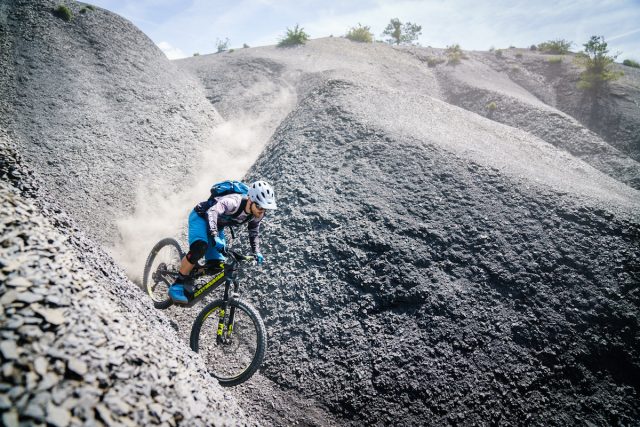
Our second ride would be on one of the iconic stages of the Trans-Provence, known by many riders as the ‘Grey Earth’ section. With a dusty shale service that’s reminiscent of a lunar landscape, the riding here was a lot more flowy and undulating, so we were better able to put the bikes to a real test by barreling down snake-like chutes, before steamrolling up steep pinches and over spine-lines.
With some really tight corners and quick direction changes, I found it surprising at just how nimble the Altitude Powerplay was to flick through the turns. Thanks to those 425mm chainstays – possibly the shortest of any e-MTB on the market – the Altitude Powerplay carves turns like a normal bike. Rather than feeling like the rear wheel is trailing one corner as you’re entering another, you feel much more in control of the bike’s directional capabilities, making it highly intuitive to ride.
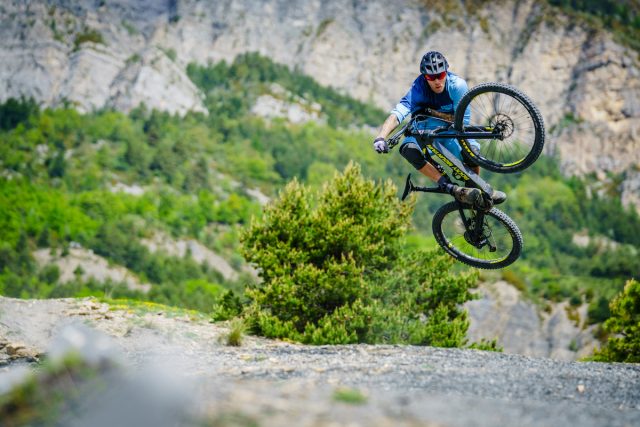
We stopped for a few photo opportunities, with Rocky Mountain ambassadors Geoff Gulevich and Wade Simmons throwing down some serious shapes of a big booter, proving that e-MTBs can indeed be jumped. Meanwhile, I proved that I still cannot jump a bike regardless of whether it has a motor or not.
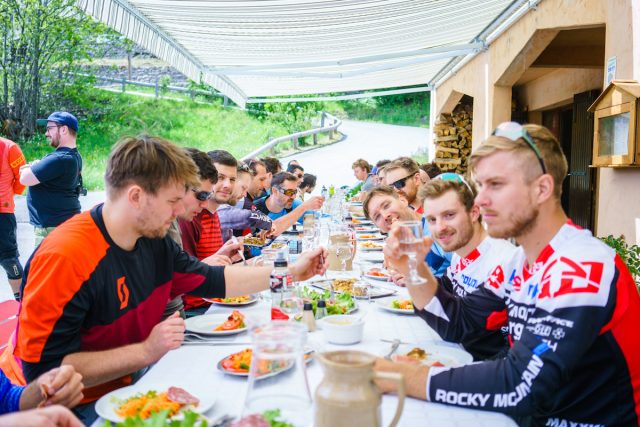

Shapes thrown and descent conquered, we hitched a shuttle ride back up to lunch, where everyone over-indulged in salad, bread, beer, homemade ravioli, braised beef stew, and platefuls of glorious local cheeses. Then cheesecake. And sorbet. And more terrible coffee. Although we could have sat in the sun with the mountain tops behind us all day long, our patient guides poked and prodded and eventually we all returned to our saddles to begin the biggest climb of the day.

Fueled by cheese and a 250W motor, our group first ascended asphalt, and then steep singletrack with far better pace than we should have been. One thing that became apparent on the big road climb that was with the 26km/h limit to the Powerplay motor, our group remained as a whole on the entire length of the ascent – something that never happens on a group ride with regular bikes. As we entered the singletrack, the trail opened up into a beautifully flowy riverbed that we were able to rip along at a much greater speed than on an un-assisted mountain bike. Finding flow on an uphill trail is something unfamiliar to many riders, but on a bike like the Altitude Powerplay, not only is uphill flow possible, it’s goddam addictive. With the riverbed littered with occasional granite outcrops, there were some ideal sections to test the bike’s technical capabilities by throwing it up some really steep little pinches that would have been impossible without the motor.
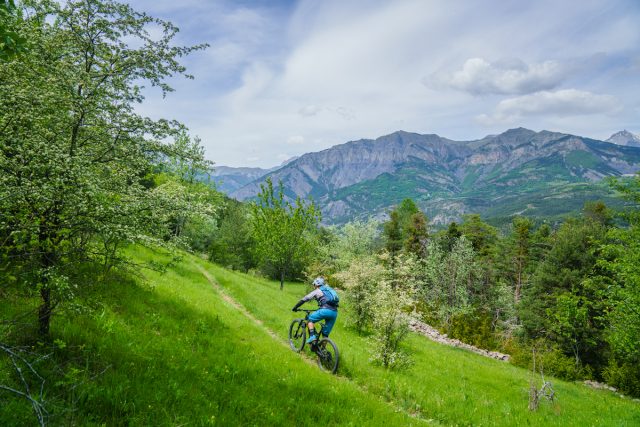
When things got really rocky – both on the trail and immediately on either side of it – I did find I was clipping the pedals a reasonable amount. This was likely due to a combination of the active suspension, the sagged BB height, and the wider Q-factor of the cranks. It may have also simply been down to the fact that you end up pedalling an e-MTB over much rougher terrain than on a regular bike, so by the very nature of it, you’re going to clip pedals more often.
Riding the Altitude Powerplay also provided me with my first experience of SRAM’s EX1 groupset. Possessing just eight gears – four less than the Eagle drivetrain I’m currently testing – the gaps in the 11-48t cassette do seem rather large, but it never seems to be a problem thanks to the motorised assistance. However, the EX1 trigger shifter will only shift one gear at a time both up and down the cassette, when a regular SRAM trigger shifter will normally get you up to five downshifts in one big lever throw. The reason SRAM do this is to reduce the chance of chain failure, given that there’s a whole load more torque running through the system than there is on a regular drivetrain. After the first hour of riding, you very quickly get used to it, and because of the larger jumps between each sprocket, the need for double or triple-shifts is reduced significantly.
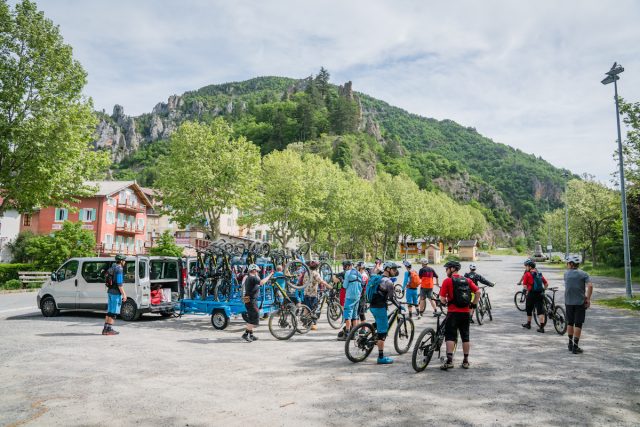
One other note on the drivetrain is the front chainring. Although it’s a standard 34t Race Face narrow-wide chainring, you cannot replace this chainring with a different size. Part of that is due to the custom roller bearing clutch that’s been adapted between the chainring and Cinch spider, which allows you to backpedal without the chain moving. Regardless, even on the super steep tech climbs we faced in Valberg, there was never a point where I needed a lower gear than the 34x48t combo – even at that point I was struggling with front wheel lift, so you certainly wouldn’t need to go lower.
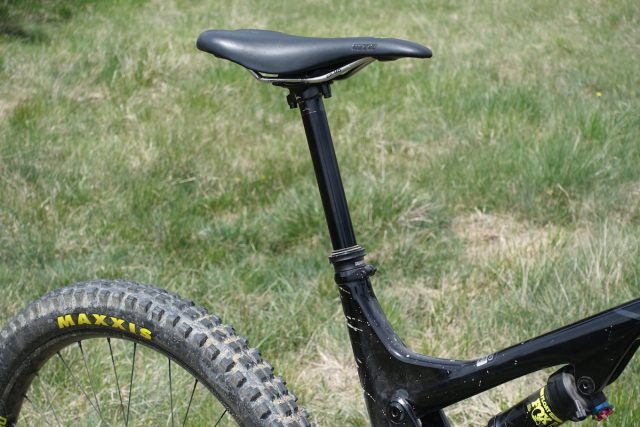
After our 20 minute climb up to the top of the mountain, it was time to enjoy the final descent of the day – a beautifully long piece of loamy singletrack that would zig-zag its way down into the base of the valley. With plenty of stretches that took us above the 26km/h speed limit on the motor, it was a good opportunity to assess the overall handling of the Altitude Powerplay.
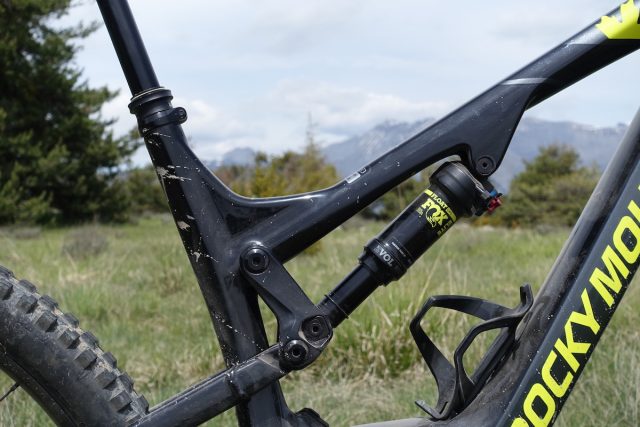
Just like the regular Altitude that Andi tested and reviewed, the assisted version delivers a really smooth suspension package thanks to custom-tuned Fox Float DPS EVOL shock and full cartridge bearing back end. Combined with the supple 36 EVOL fork, the suspension is reactive and well-damped for a wide variety of impacts and speeds. With the weight of the bike pushing the fat Maxxis tyres into the dirt, traction is absolutely brilliant. And despite using full travel on numerous occasions, I never once experienced a harsh bottom-out, which is an indicator of well-tuned end-stroke progression.
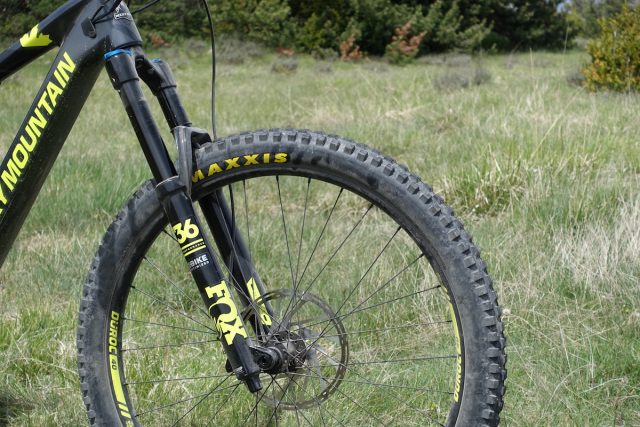
Highlighting just how good mountain bike suspension has gotten in 2017, the Altitude Powerplay manages to achieve a plush and smooth feel to the travel, whilst still delivering enough mid-stroke support that it retains a playful and responsive feel at the pedals. It’s quite possibly one of the best rear suspension designs I’ve ridden, and made all the more effective thanks to the added sprung mass that the battery and motor system adds to the frame. How much weight exactly? The Altitude Powerplay adds something like 8kg over the regular Altitude, with most of that being in the frame and motor.
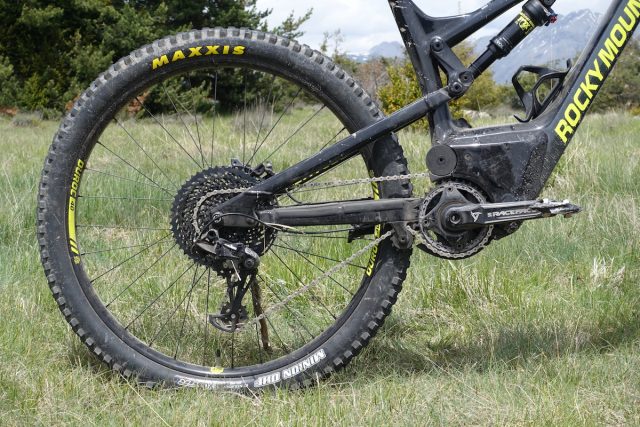
Because that mass is relatively central and low down in the frame, the Altitude Powerplay has a very sure-footed feel as the speeds increase – just like a heavy downhill bike does. For beginner and intermediate riders, this stability affords more confidence on the descents, and it adds significantly to the overall ride experience. I was able to let off the brakes and charge into rough chatter with loads of confidence that the stable chassis would be less likely to be pinged off line, while the supple suspension would soak up the ripples along the way.
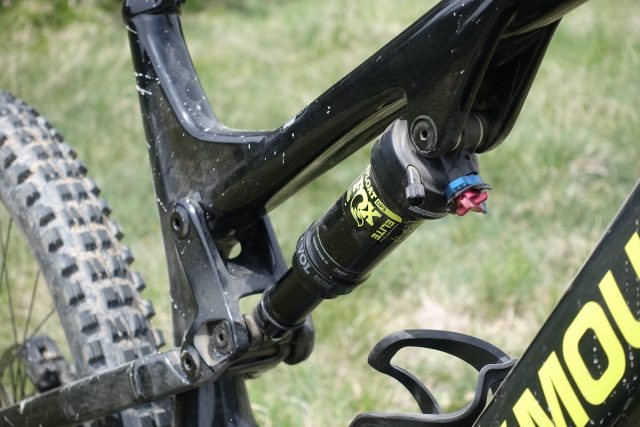
Unfortunately I didn’t get a chance to play around with the Ride-9 geometry adjuster, and although the bike handled well on the steep trails of Valberg, I would have liked to have tried it in the slacker 65° setting (stock is 65.6°), for just a little more front-end stability to help better manage the bike’s descending momentum. Other than that, I have zero complaints from either the bike’s geometry or suspension – it’s dialed.
Overall
At this point in the first ride review, I have to put in the usual disclaimer that informs you I can only make so many conclusions about a bike’s performance having only ridden it for a day. But to be honest, one day was plenty of time to get familiar with the Altitude Powerplay and to understand that this is quite possibly one of the best electric-assist mountain bikes on the market right now. By building their own motor system, Rocky’s engineers have delivered a smooth and intuitive e-MTB that manages to hold the same geometry as it’s non-assisted sibling. And given how impressive the regular Altitude is, that’s a very good thing indeed.
As to how the Altitude Powerplay is going to be received by Rocky’s fans and the wider mountain biking audience? We’ll just have to wait and see. But judging by the growing popularity of e-MTB tours in alpine areas like Valberg, I suspect Rocky’s fortunes with new riders coming into the sport are far, far greater. Interesting times ahead no doubt.
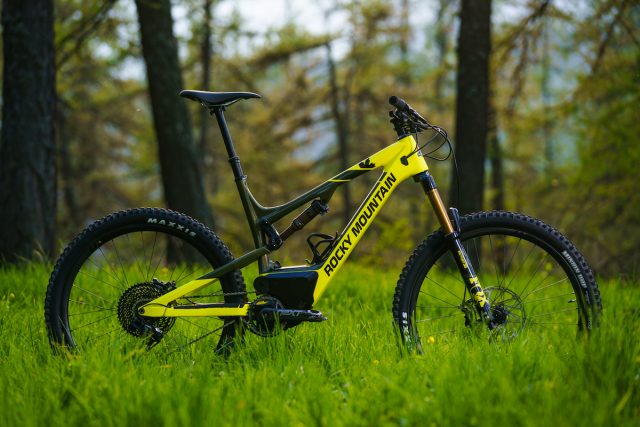
2018 Rocky Mountain Altitude Powerplay 70 Specifications
- Frame // SMOOTHWALL™ Carbon Main Frame With FORM™ Alloy Seat/Chainstays, 150mm Travel
- Fork // Fox 36 Float EVOL Grip Performance, 160mm Travel
- Shock // Fox Float DPS EVOL Performance
- Motor // 250 W / 48V Powerplay Drive
- Battery // Li-Ion 632 Watt/Hr
- Hubs // Rocky Mountain Sealed Boost 110x15mm Front & DT Swiss 370 Rear 148x12mm
- Rims // Sun Duroc 40
- Tyres // Maxxis Minion DHF WT EXO TR 2.5in Front & Rear
- Chainset // Race Face Turbine Cinch W/ 34t Narrow/Wide Chainring
- Front Mech // N/A
- Rear Mech // SRAM EX1, 8-Speed
- Shifters // SRAM EX1, 8-Speed
- Cassette // SRAM EX1, 11-48t
- Brakes // SRAM Guide RE, 200mm Front & Rear
- Stem // Rocky Mountain 35AM, 35mm Length
- Bars // Race Face Chester, 780mm Wide
- Grips // Rocky Mountain Lock On XC
- Seatpost // Fox Transfer Performance Elite 30.9mm, 150mm Travel
- Saddle // WTB Volt Race
- Size Tested // Medium
- Sizes available // S, M, L, XL
- Claimed Weight // 22.3kg / 49lbs
Disclosure
Flights, accommodation and hospitality for this press trip were provided by Rocky Mountain.
[“Source-ndtv”]
